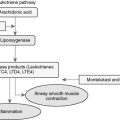CHAPTER 30 Toxicology
I. Basic Definitions
II. General Approach
B. Medical history
E. Diagnosis, antidotes
1. Decontamination
d. Gastrointestinal
1. Induce emesis
III. Specific Toxins and Management
A. Acetaminophen
1. Narrow therapeutic range. Maximum dose: 4 g daily or 90 mg/kg daily (children); lower in patients with hepatic disease or with concomitant alcohol use.
2. Presentation
b. Stage II, latent stage (24–48 hours): increase in liver function tests (e.g., Alanine Aminotransferase [ALT], Asparate Aminotransferase [AST], and bilirubin)
B. Anticholinergics
C. Benzodiazepines
1. Presentation: drowsiness, slurred speech, nystagmus, ataxia, hypotension, coma with respiratory depression
D. Digoxin
1. Presentation: nausea, vomiting, diarrhea
2. Complications: hyperkalemia, arrhythmias (initially as sinus bradycardia, followed by atrial tachyarrhythmias with or without heart block)
E. Salicylates
1. Presentation: tachypnea, tachycardia, hyperthermia, altered serum glucose, dehydration, abdominal pain, nausea/vomiting, tinnitus, lethargy, altered mental status, seizures, respiratory alkalosis, metabolic acidosis
4. Complications: hypokalemia, hyperglycemia, pulmonary edema, acute renal failure, GI bleed, hypoprothrombinemia
F. Cyclic antidepressants
G. Sympathomimetics
2. Presentation: tremor, agitation, moist skin (sweating), mydriasis, hypertension, delirium, seizure
3. Laboratory evaluation: electrolytes, BUN, creatinine, blood glucose, creatinine kinase (CK) levels, urine drug screening
H. Warfarin
1. Presentation: bleeding, nosebleeds, bleeding of gums, vomiting blood, dark brown urine, red or black color in stool, unusual pain or swelling, headache, dizziness, weakness
3. Management
b. Chronic
1) If INR is higher than therapeutic levels but less than 6 and the patient is not bleeding, withhold warfarin for 2–3 days and restart when the INR approaches the therapeutic range.
2) If INR is between 6 and 10 and the patient is not bleeding, administer 5–10 mg of vitamin K1 orally.
K. Cyanide
1. Presentation: tachypnea, bradypnea, tachycardia, bradycardia, hypoxia, hypotension, mydriasis, shock, seizures
3. Management
a. Hydroxocobalamin: 50 mg/kg IV in 30 minutes or 5 g IV in 30 minutes (faster if patient is in cardiac arrest); may repeat dose once. Do not exceed total dose of 15 g; when repeated, infusion should be slow, lasting 8 hours.
L. Ethylene glycol (antifreeze)
2. Presentation
a. Stage 1, neurological (30 minutes to 12 hours after ingestion): nausea, vomiting, transient inebriation, euphoria, coma associated with hypotonia, hyporeflexia, occasional seizures, and meningismus
4. Management
b. Fomepizole: Loading dose: 15 mg/kg IV in 30 minutes; maintenance dose: 15 mg/kg IV every 12 hours until patient is asymptomatic with a normal pH level and the ethylene glycol level is <20 mg/dL
M. Iron
1. Presentation: somnolence, hyperventilation from acidosis, cardiovascular collapse, abdominal tenderness, muscle rigidity, loose stool, pulmonary edema, altered mental status
2. Laboratory evaluation: serum iron concentration, CBC, electrolytes, renal profile, liver function tests, PT/INR, acid-base measurements
N. Opioids
1. Presentation: drowsiness, euphoria, depressed consciousness, CNS depression, respiratory depression, papillary miosis, ventricular arrhythmias, seizures, mydriasis
O. Organophosphates
1. Presentation: cholinergic stimulation (SLUDGE = salivation, lacrimation, urination, diarrhea, GI upset, emesis) and DUMBELS (diaphoresis and diarrhea; urination; miosis; bradycardia, bronchospasm, bronchorrhea; emesis; excess lacrimation; and salivation)
3. Management
b. Atropine: 1–2 mg IV bolus, repeat every 3–5 minutes as needed for desired effects (drying of pulmonary secretions and adequate oxygenation)
REVIEW QUESTIONS
(Answers and Rationales on page 384.)
1. A 62-year-old African American man presents to the emergency department complaining of weakness, palpitations and dizziness; he also has low blood pressure. The patient has prolonged QRS complex. It appears that the patient has ingested a toxic amount of amitriptyline. The patient should receive which of the following?
3. A 22-year-old woman presents to the emergency department 3 hours after ingesting 50 acetaminophen tablets (500 mg). Her initial acetaminophen level was 122 mcg/mL approximately 4 hours after ingestion. What is the most appropriate treatment for this patient?
4. An elderly woman presents to the pharmacy inquiring about ipecac. She would like to keep a bottle in her daughter’s house in case of an emergency. What is the most appropriate response?
6. A 28-year-old woman with a history of depression and post-traumatic stress disorder presents to the emergency department 5 hours after ingesting 500 tablets of aspirin (325 mg each) as a suicide attempt. She denies ingesting any other chemical or drug. Vital signs: heart rate 118 beats per minute; blood pressure 112/60 mm Hg; respiratory rate 22 breaths per minute; temperature 99°F. Serum drug screen reveals a salicyalte level of 630 mcg/mL. What is the most appropriate initial treatment for this patient?





